
Hilanderas del Fin del Mundo • Luján Agusti
At the southernmost tip of South America, a group of women are working together to keep alive their cultural tradition of spinning and weaving wool for clothing.
These women call themselves “Hilanderas del fin de mundo”, or “spinners at the end of the world,” and they spin, stain, and weave local sheep’s wool in Argentina’s Tierra del Fuego region, where the process has been passed down through generations of families.
The women are mostly between 40 and 80 years old, though some of their younger siblings have shown an interest in learning and participated in the process. In many cases, the women learned techniques for spinning and weaving sheep’s wool when they were young, making their own clothing when they were girls.
Their hands weave garments that reflect the colors of their surroundings, which can be harsh and unpredictable. They use white to represent snow and red, orange, yellow, and green to represent autumn.
“Each piece of clothing and object we make carries with it a story that refers to the place where it was made—its landscape, its nature, the warmth with which the hands of these women spin and weave despite the inclement weather in the end of the world,” says Norma Enriquez, the leader of the hilanderas community. “Each garment carries with it the immensity of Tierra del Fuego, a big respect for nature and for our own history.”
The images shown in this project have been created with the technique of anthotype - an image created using photosensitive material from plants. The dyes used are the sameas that the spinners use for their pieces: roots, leaves and flowers.
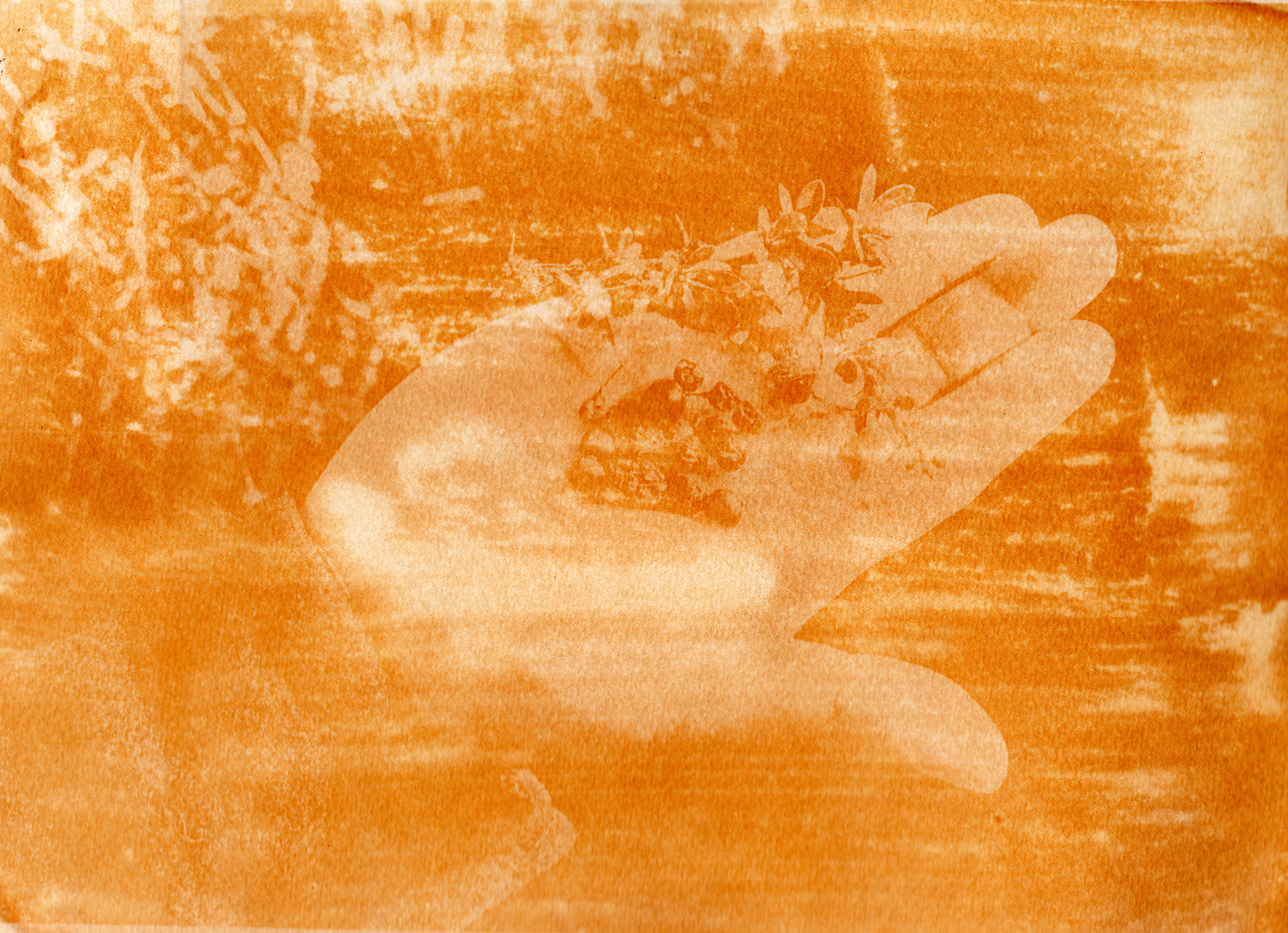
Portrait of Esther Condori, weaver and member of "Hilanderas del Fin del Mundo", a group of women dedicated to retake traditions of embroidery and weaving by invoking local production against the advance of imports using natural raw materials produced in the island. Esther was born in Salta, Argentina, and moved to Ushuaia when she was 19 years old, she comes from a family of weavers. Anthotype scan made with natural dyes made with a mixture of roots of local plants such as Lupino, Calafate and Turmeric. Photographer: Luján Agusti. Tierra del Fuego. April 15th, 2018
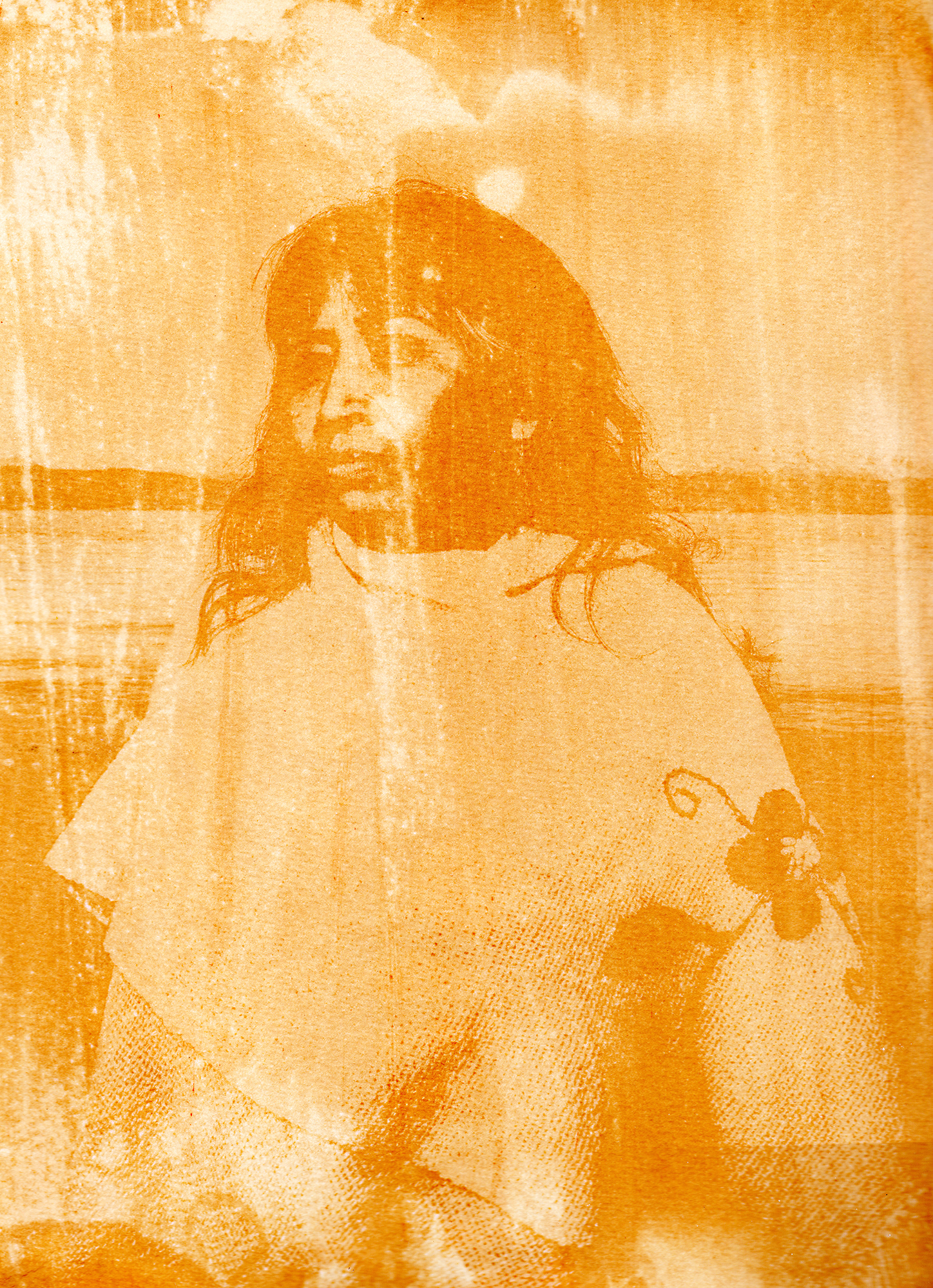
Portrait of Esther Condori at Playa Larga, Ushuaia, weaver and member of "Hilanderas del Fin del Mundo", a group of women dedicated to retake traditions of embroidery and weaving by invoking local production against the advance of imports using natural raw materials produced in the island. Esther was born in Salta, Argentina, and moved to Ushuaia when she was 19 years old, she comes from a family of weavers. Anthotype scan made with natural dyes made with a mixture of roots of local plants such as Lupino, Calafate and Turmeric. Photographer: Luján Agusti. Tierra del Fuego. April 15th, 2018
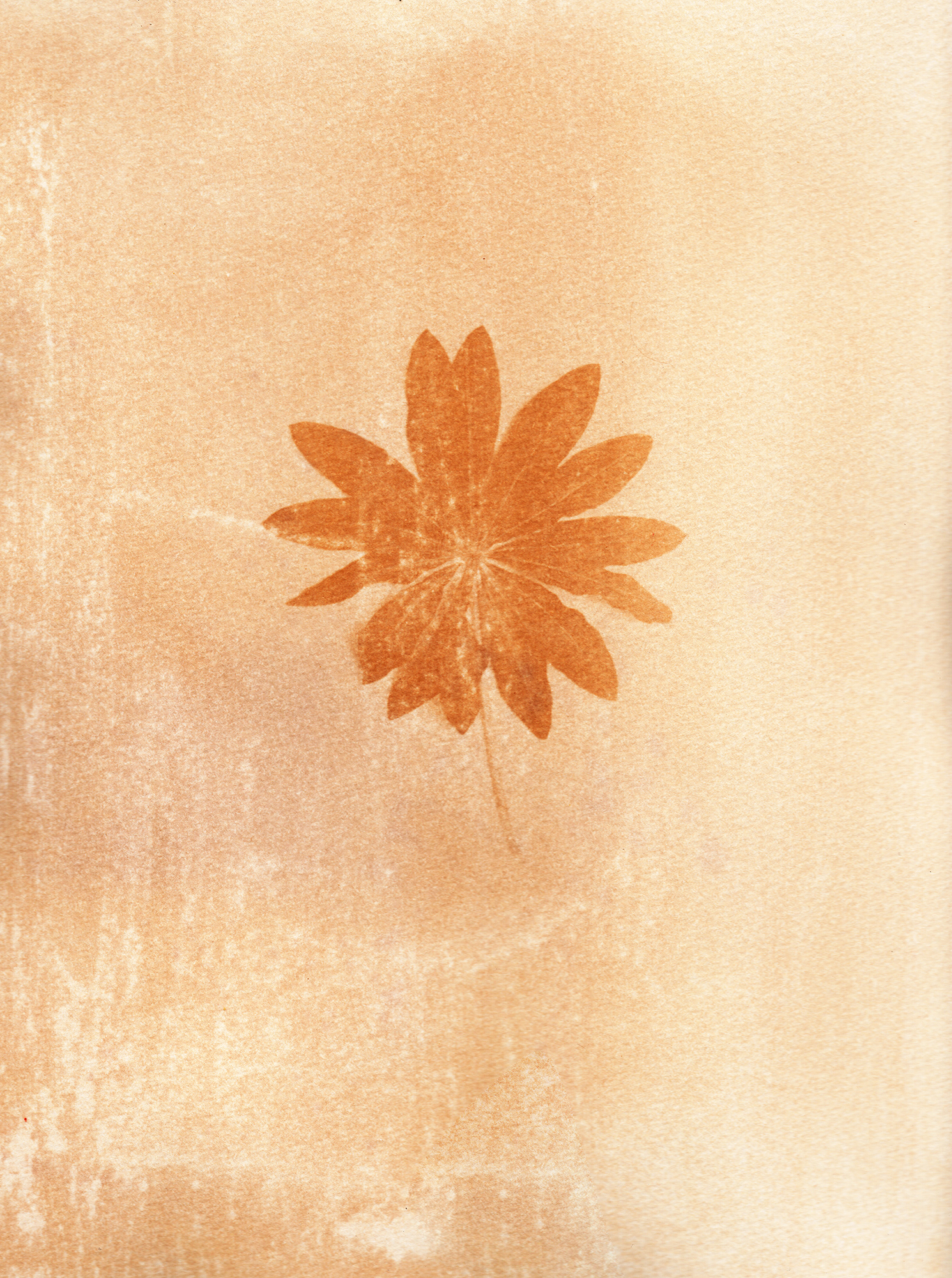
Detail of a leaf of Lupino, an autochthonous and symbolic plant of the Island of Tierra del Fuego, used to create natural dyes used by the "Hilanderas del Fin del Mundo", a group of women dedicated to retake traditions of embroidery and weaving by invoking local production against the advance of imports using natural raw materials produced in the island. Anthotype scan made with natural dyes made with a mixture of roots of local plants such as Lupino, Calafate and Turmeric. Photographer: Luján Agusti. Tierra del Fuego. April 15th, 2018
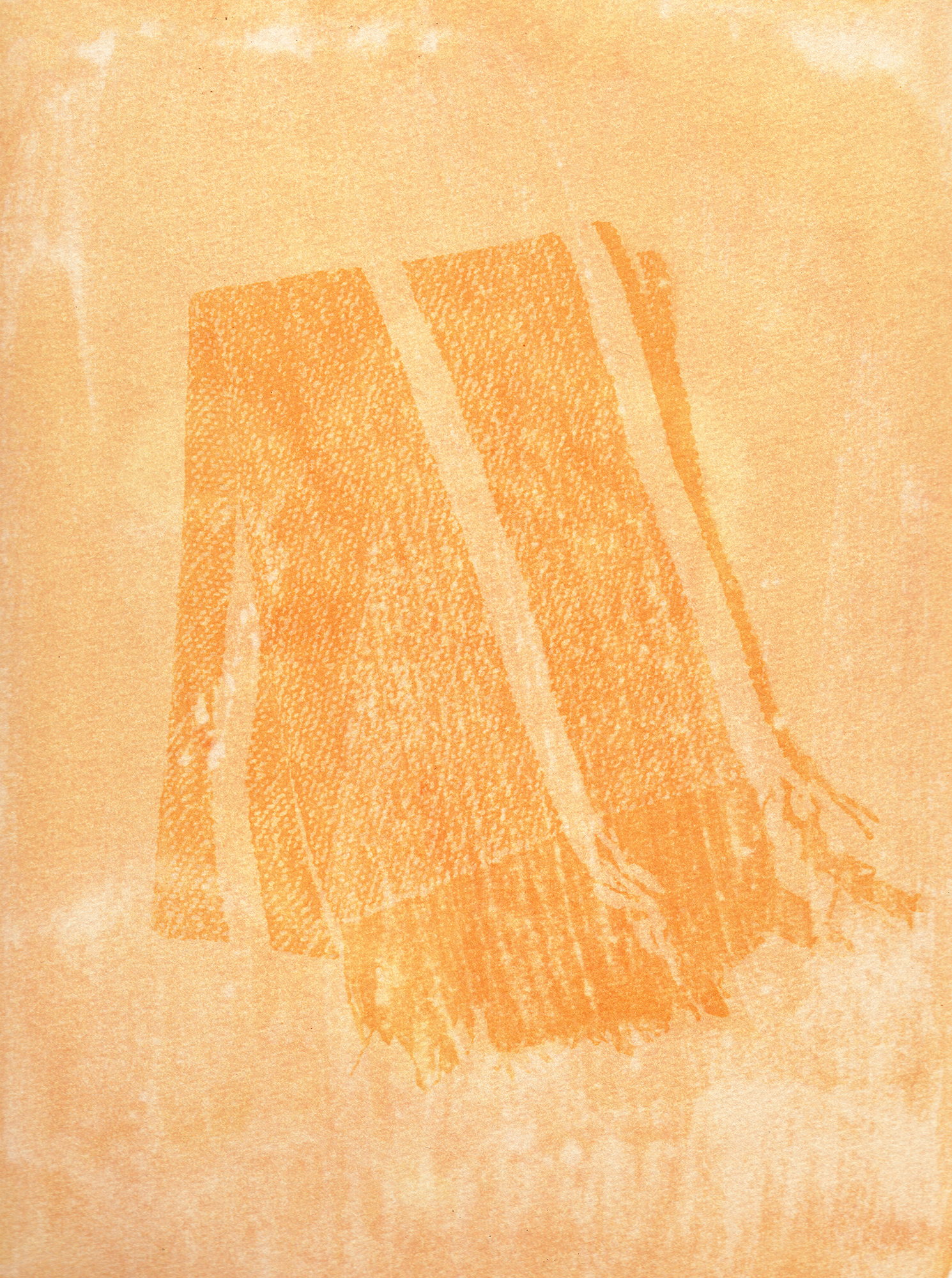
Detail of a scarf made by the "Hilanderas del Fin del Mundo", a group of women dedicated to retake traditions of embroidery and weaving by invoking local production against the advance of imports using natural raw materials produced in the island. Scan of an Anthotype made with natural dyes created with Turmeric. Photographer: Luján Agusti. Tierra del Fuego. April 15th, 2018

Portrait of Patricia Lamas, weaver and member of "Hilanderas del Fin del Mundo", a group of women dedicated to retake traditions of embroidery and weaving by invoking local production against the advance of imports using natural raw materials produced in the island. Anthotype scan made with natural dyes made with a mixture of roots of local plants such as Lupino, Calafate and Turmeric. Photographer: Luján Agusti. Tierra del Fuego. April 15th, 2018
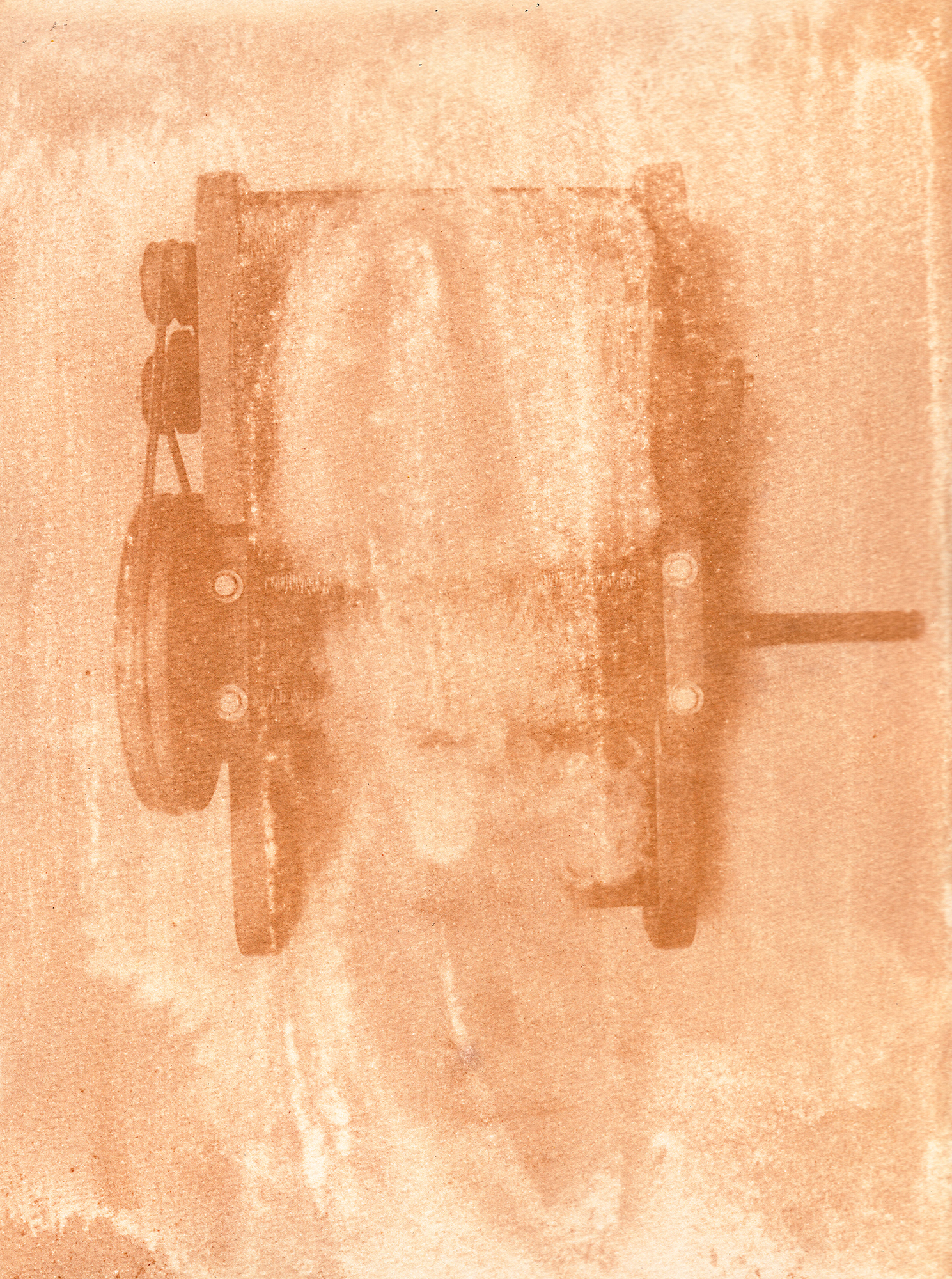
Detail of a "Cardadora" (Carding machine) used to comb the wool the "Hilanderas del Fin del Mundo", a group of women dedicated to retake traditions of embroidery and weaving by invoking local production against the advance of imports using natural raw materials produced in the island. Anthotype scan made with natural dyes made with a mixture of roots of local plants such as Lupino, Calafate and Turmeric. Photographer: Luján Agusti. Tierra del Fuego. April 15th, 2018
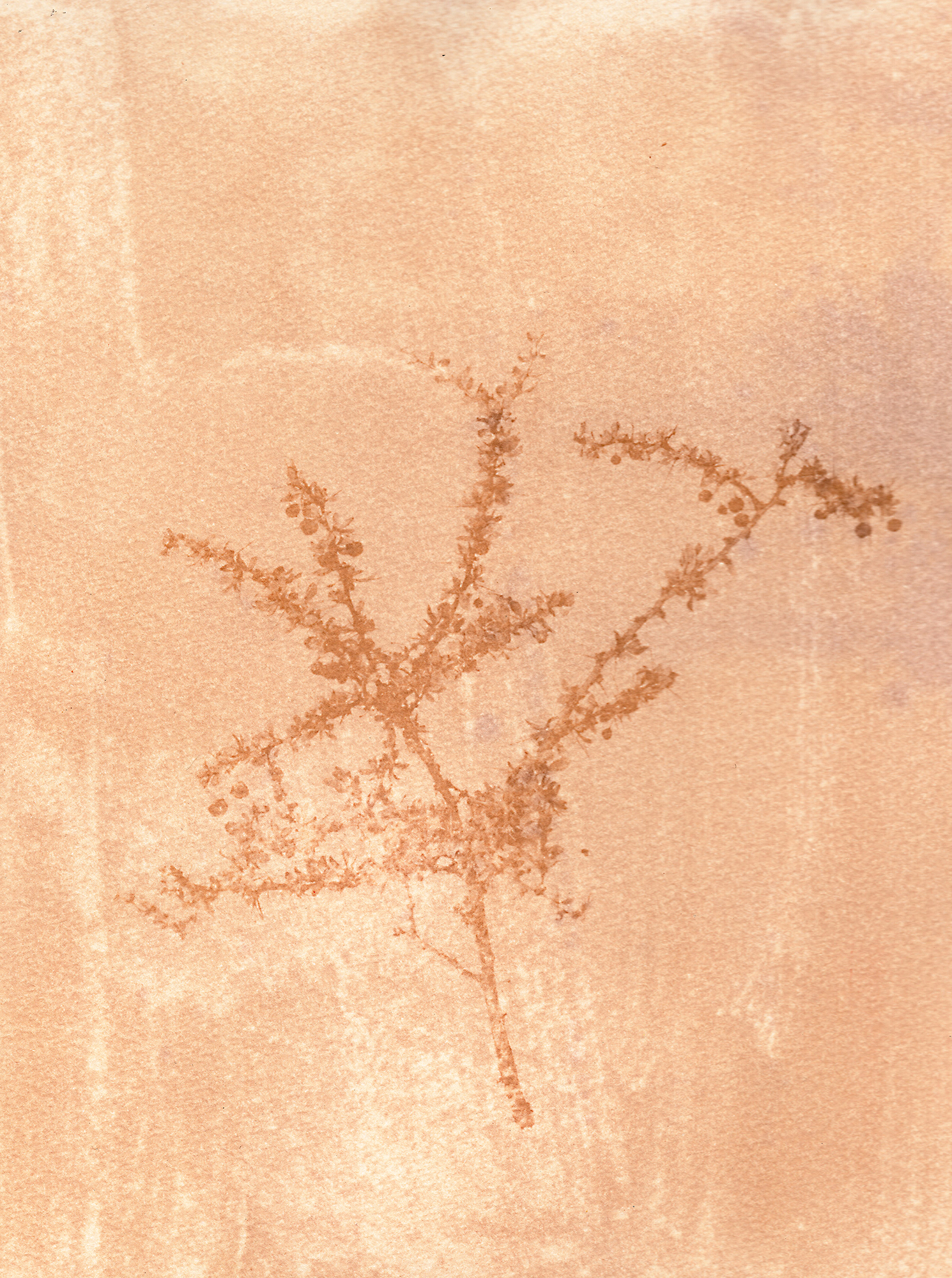
Detail of Calafate, an autochthonous and symbolic plant of the Island of Tierra del Fuego, used to create natural dyes used by the "Hilanderas del Fin del Mundo", a group of women dedicated to retake traditions of embroidery and weaving by invoking local production against the advance of imports using natural raw materials produced in the island. There is a myth that says that if you eat Calafate you must come back to the Island. Anthotype scan made with natural dyes made with a mixture of roots of local plants such as Lupino, Calafate and Turmeric. Photographer: Luján Agusti. Tierra del Fuego. April 15th, 2018
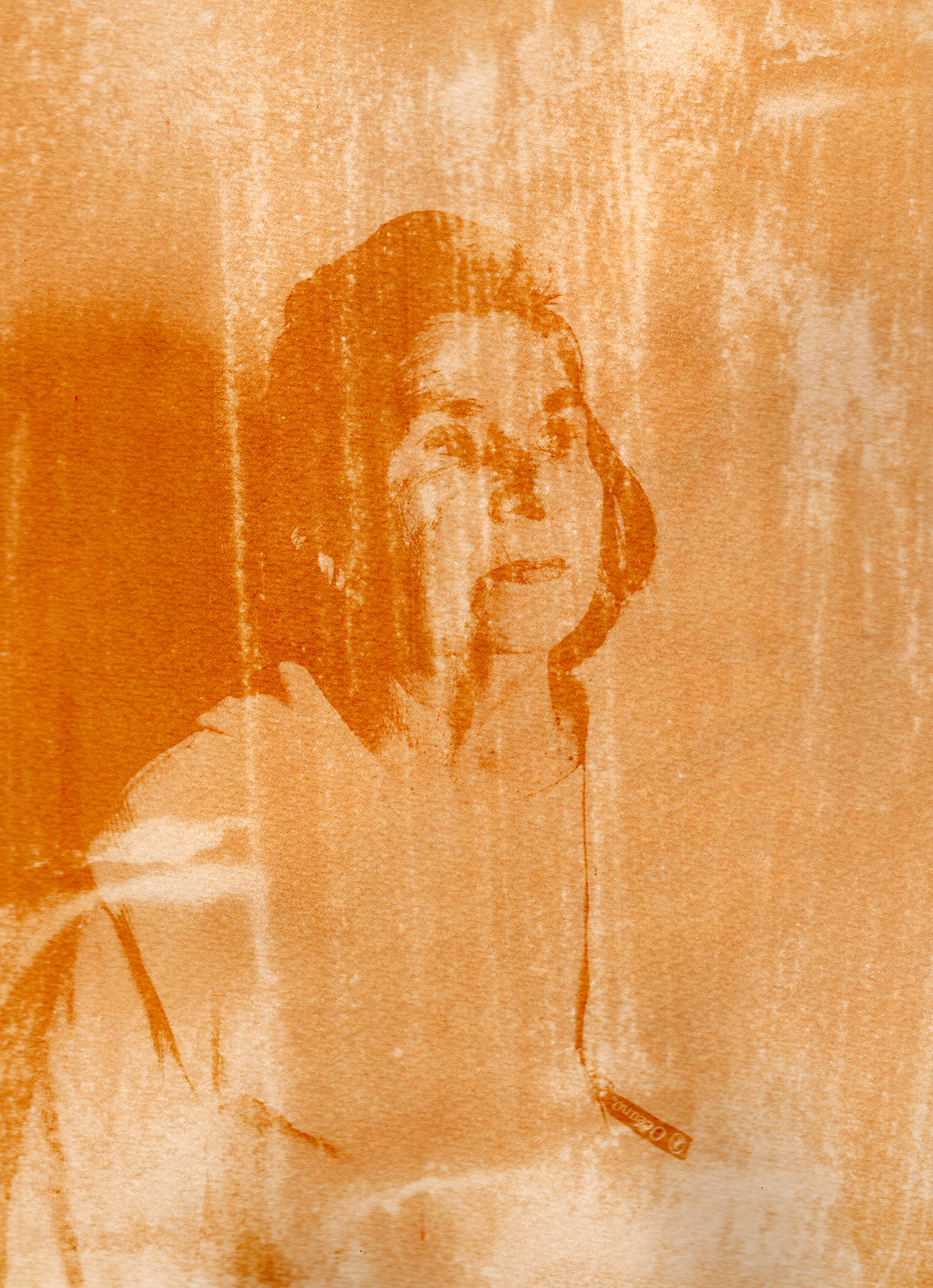
Portrait of Margarita Ignacia, weaver and member of "Hilanderas del Fin del Mundo", a group of women dedicated to retake traditions of embroidery and weaving by invoking local production against the advance of imports using natural raw materials produced in the island. Esther was born in Salta, Argentina, and moved to Ushuaia when she was 19 years old, she comes from a family of weavers. Anthotype scan made with natural dyes made with a mixture of roots of local plants such as Lupino, Calafate and Turmeric. Photographer: Luján Agusti. Tierra del Fuego. April 15th, 2018
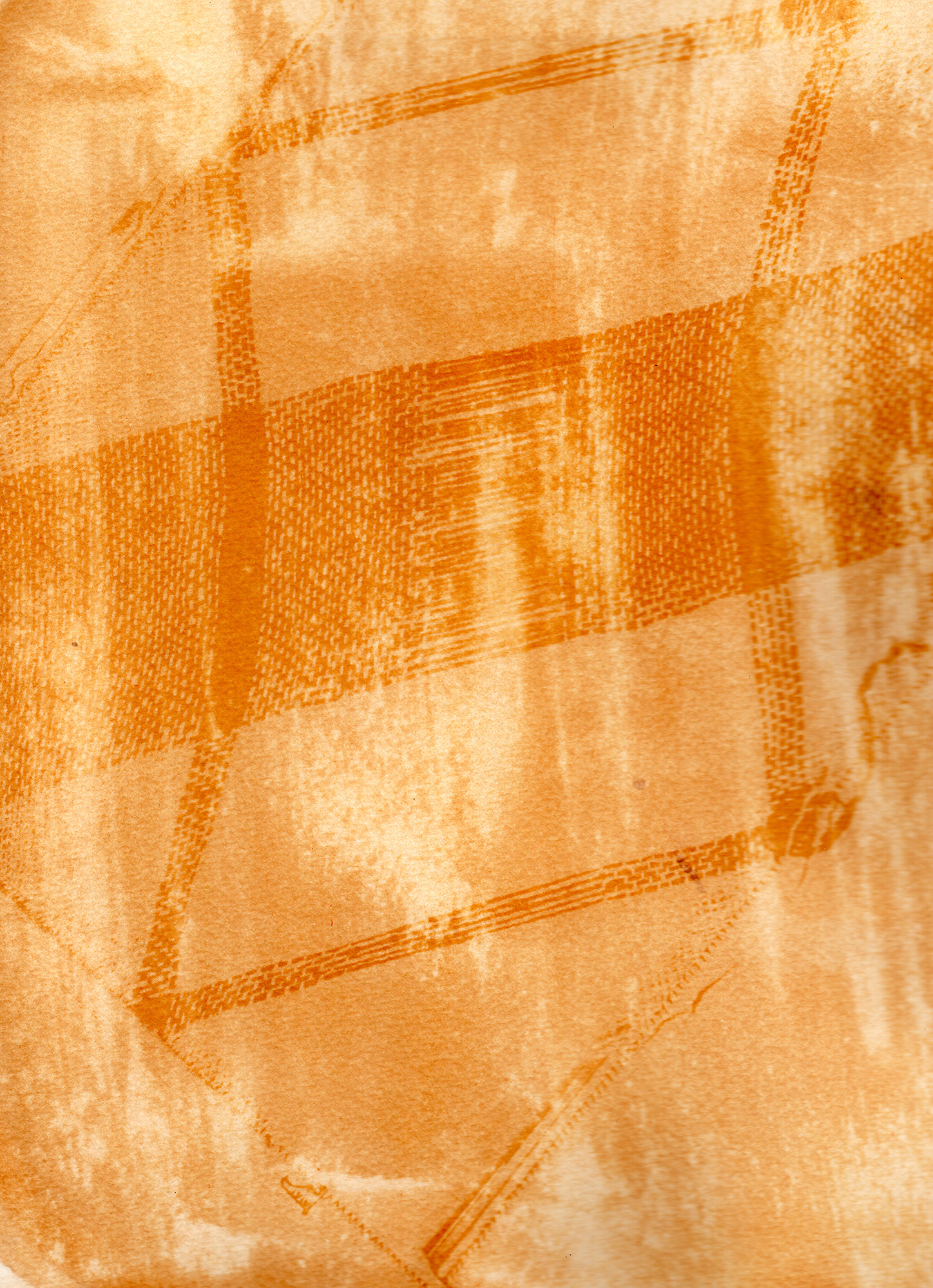
Detail of a weave in process, made by the "Hilanderas del Fin del Mundo", a group of women dedicated to retake traditions of embroidery and weaving by invoking local production against the advance of imports using natural raw materials produced in the island. Scan of an Anthotype made with natural dyes created with Turmeric. Photographer: Luján Agusti. Tierra del Fuego. April 15th, 2018
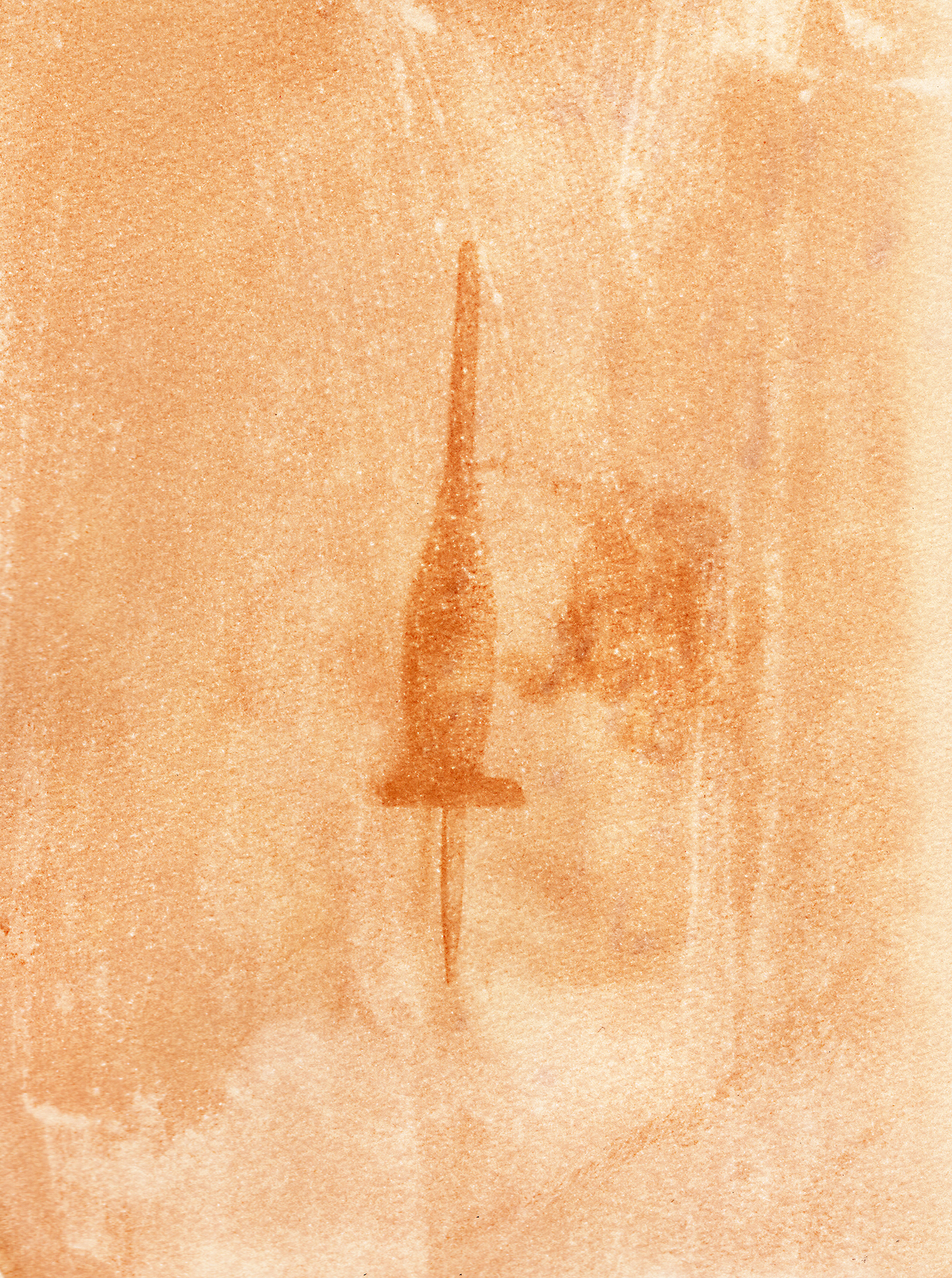
Detail of "Huso" (spindle) used to manually spin the wool. The "Hilanderas del Fin del Mundo", are a group of women dedicated to retake traditions of embroidery and weaving by invoking local production against the advance of imports using natural raw materials produced in the island. Anthotype scan made with natural dyes made with a mixture of roots of local plants such as Lupino, Calafate and Turmeric. Photographer: Luján Agusti. Tierra del Fuego. April 15th, 2018

Portrait of Norma Enriquez, weaver and member of "Hilanderas del Fin del Mundo", a group of women dedicated to retake traditions of embroidery and weaving by invoking local production against the advance of imports using natural raw materials produced in the island. Norma is Fueguian and began working with wool a few years ago, today she is in charge of the organization of the group. Anthotype scan made with natural dyes made with a mixture of roots of local plants such as Lupino, Calafate and Turmeric. Photographer: Luján Agusti. Tierra del Fuego. April 15th, 2018
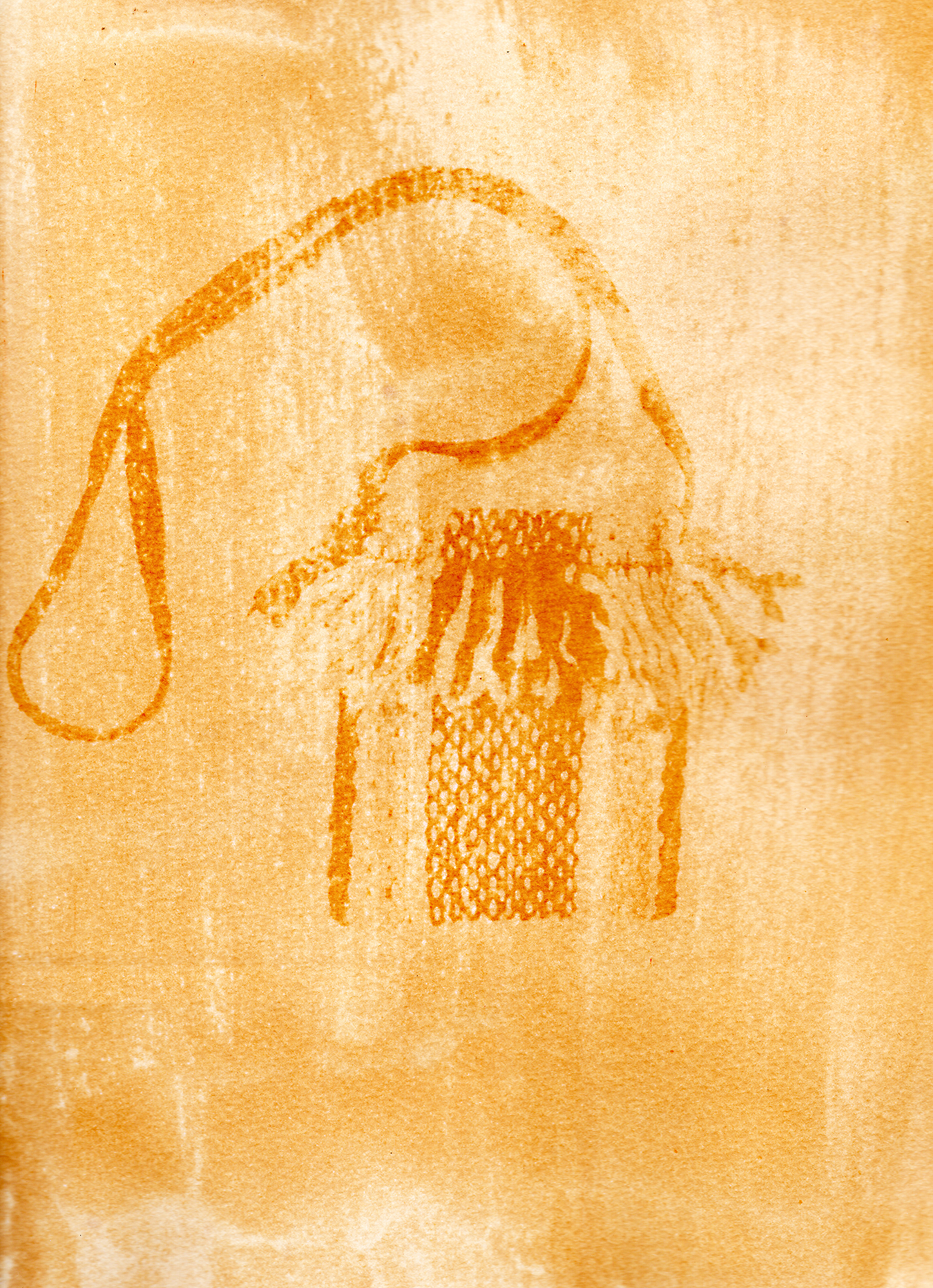
Detail of a bag made by the "Hilanderas del Fin del Mundo", a group of women dedicated to retake traditions of embroidery and weaving by invoking local production against the advance of imports using natural raw materials produced in the island. Scan of an Anthotype made with natural dyes created with Turmeric. Photographer: Luján Agusti. Tierra del Fuego. April 15th, 2018
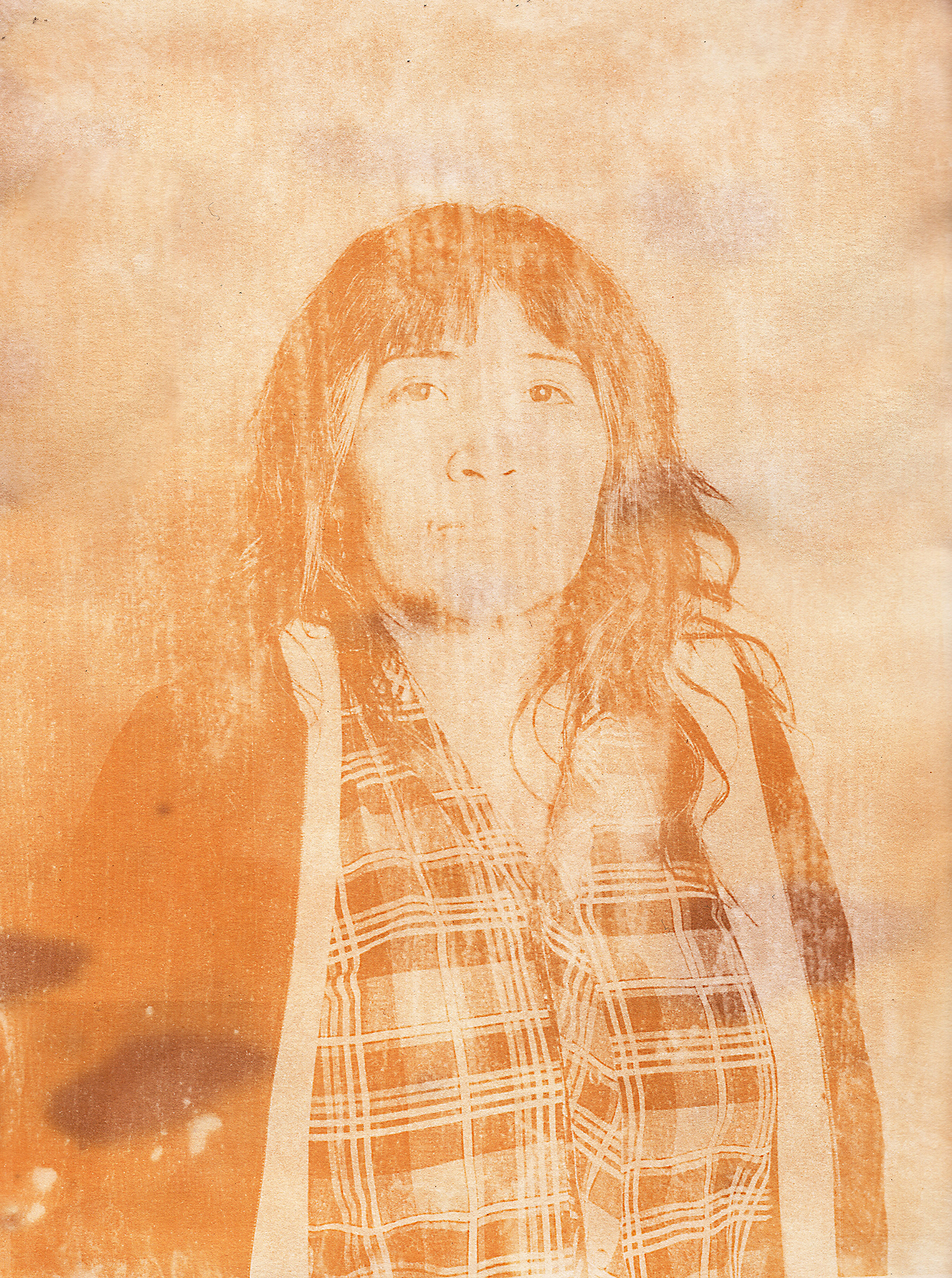
Portrait of Esther Condori, weaver and member of "Hilanderas del Fin del Mundo", a group of women dedicated to retake traditions of embroidery and weaving by invoking local production against the advance of imports using natural raw materials produced in the island. Esther was born in Salta, Argentina, and moved to Ushuaia when she was 19 years old, she comes from a family of weavers. Anthotype scan made with natural dyes made with a mixture of roots of local plants such as Lupino, Calafate and Turmeric. Photographer: Luján Agusti. Tierra del Fuego. April 15th, 2018
PROJECTS
Hilanderas del Fin del Mundo
By Luján Agusti
At the southernmost tip of South America, a group of women are working together to keep alive their cultural tradition of spinning and weaving wool for clothing.
These women call themselves “Hilanderas del fin de mundo”, or “spinners at the end of the world,” and they spin, stain, and weave local sheep’s wool in Argentina’s Tierra del Fuego region, where the process has been passed down through generations of families.
The women are mostly between 40 and 80 years old, though some of their younger siblings have shown an interest in learning and participated in the process. In many cases, the women learned techniques for spinning and weaving sheep’s wool when they were young, making their own clothing when they were girls.
Their hands weave garments that reflect the colors of their surroundings, which can be harsh and unpredictable. They use white to represent snow and red, orange, yellow, and green to represent autumn.
“Each piece of clothing and object we make carries with it a story that refers to the place where it was made—its landscape, its nature, the warmth with which the hands of these women spin and weave despite the inclement weather in the end of the world,” says Norma Enriquez, the leader of the hilanderas community. “Each garment carries with it the immensity of Tierra del Fuego, a big respect for nature and for our own history.”
The images shown in this project have been created with the technique of anthotype - an image created using photosensitive material from plants. The dyes used are the sameas that the spinners use for their pieces: roots, leaves and flowers.
Publications
The Spinners at the “End of the World,” National Geographic
